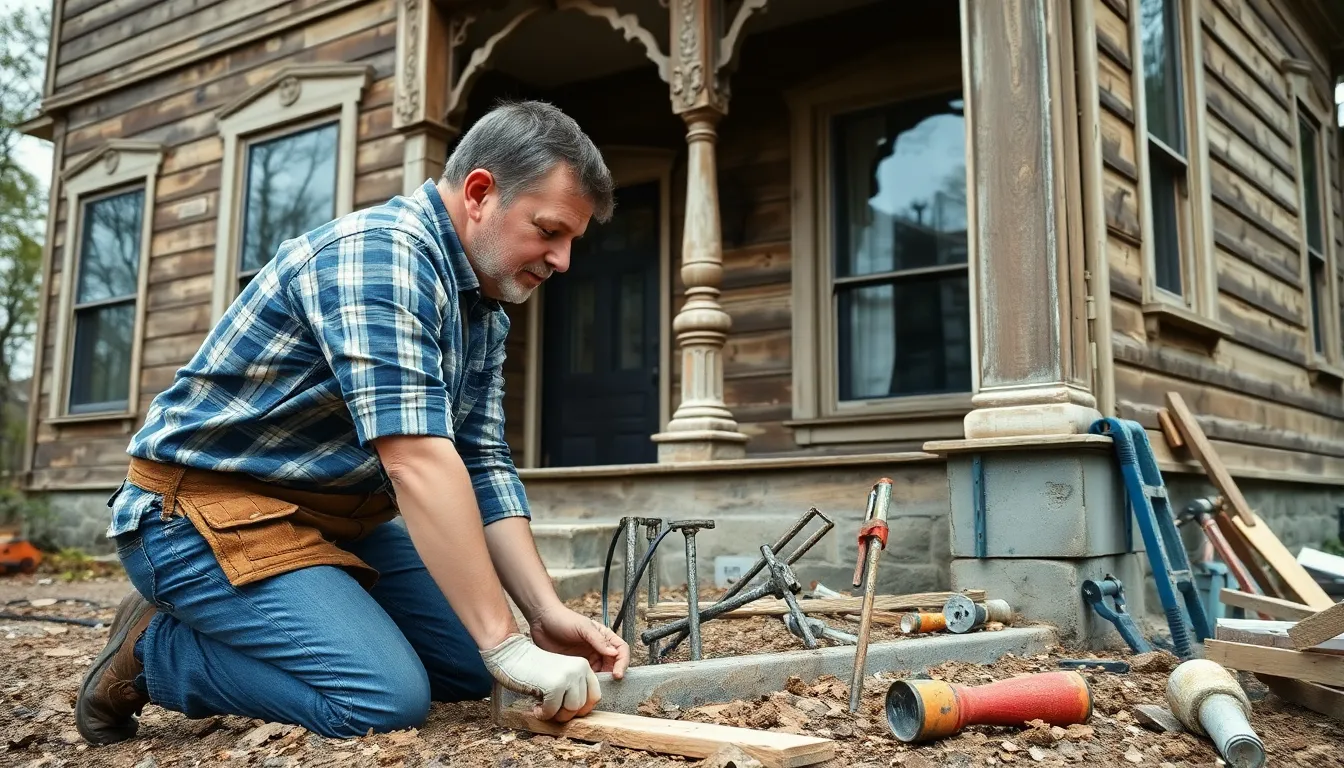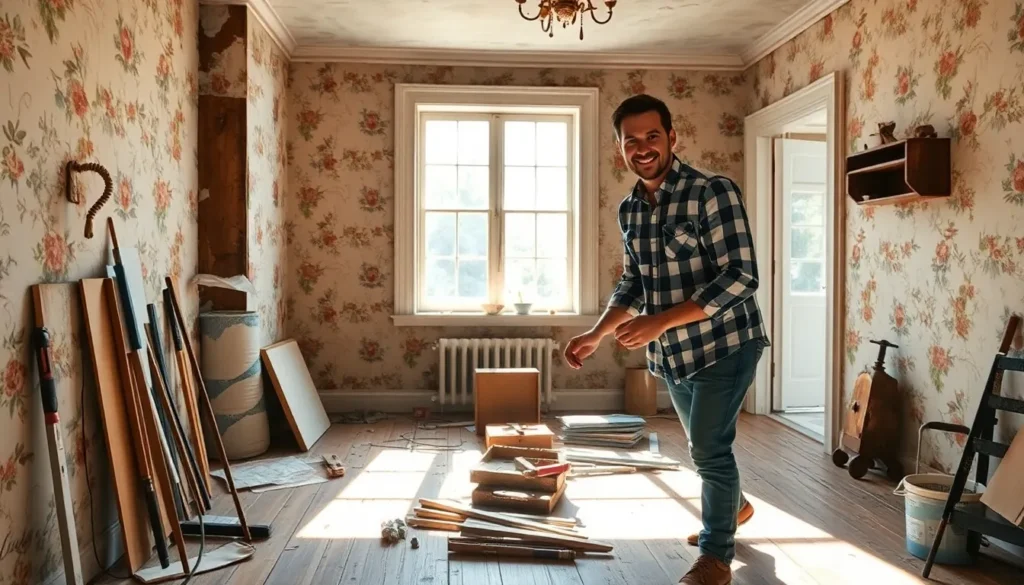Old houses have a charm that modern homes just can’t replicate. With their creaky floors and quirky layouts, they tell stories that new builds can only dream of. But let’s face it—sometimes those stories come with a side of peeling wallpaper and questionable plumbing. Renovating an old house isn’t just a project; it’s an adventure filled with surprises that might make you laugh, cry, or both.
Table of Contents
ToggleBenefits Of Old House Renovation
Renovating an old house offers numerous advantages, from preserving historical value to enhancing modern comfort.
Preserving Historical Value
Renovating an old house maintains its architectural integrity. Period features such as moldings, fixtures, and windows often reflect unique craftsmanship. These elements tell a story about the home’s era and its previous occupants. Many buyers appreciate properties with historical significance, increasing their market value. Conservation can also attract history enthusiasts who strive to protect local heritage. Tax incentives are often available for those committed to preserving historical homes, further supporting renovation efforts.
Enhancing Modern Comfort
Old houses can achieve modern comfort with thoughtful renovations. Updating outdated systems ensures energy efficiency and safety. For example, incorporating modern insulation reduces energy bills significantly. Upgraded kitchens and bathrooms appeal to contemporary lifestyles while maintaining character. Improved layouts maximize space and usability, making them more practical for current occupants. Smart home technology can enhance convenience without compromising historic charm. Adding contemporary amenities makes these homes more livable while raising overall value.
Planning Your Renovation

Planning an old house renovation requires careful consideration. Homeowners must prioritize structural integrity, budgeting, and the maintenance of historical features.
Assessing Structural Integrity
Checking the foundation is crucial. Signs of deterioration, such as cracks or shifting, indicate possible issues. Inspecting the roof for leaks or missing shingles helps identify repairs needed. Walls should be evaluated for bowing or moisture problems. Additionally, assessing electrical and plumbing systems ensures they meet modern standards. Engaging a professional inspector for a thorough analysis provides valuable insights. This step guarantees safety while preserving the home’s character.
Budgeting For Your Project
Creating a realistic budget serves as the foundation for the renovation. Listing all anticipated costs includes materials, labor, and permits. Allocating 10-15% of the budget for unexpected expenses protects against surprises. Prioritizing expenses ensures essential repairs get addressed first. Reviewing financing options helps homeowners choose the best strategy for their situation. Comparing quotes from multiple contractors offers opportunities for savings. Tracking expenses throughout the renovation keeps the project on budget and on schedule.
Choosing The Right Materials
Selecting the right materials effectively impacts an old house renovation. Consideration for sustainability and aesthetics enhances the overall outcome.
Sustainable Options
Sustainable materials play a crucial role in modern renovations. Bamboo flooring offers durability and renewability, while reclaimed wood preserves character and reduces waste. Opting for energy-efficient windows and insulation enhances energy conservation, resulting in long-term savings. Choosing low-VOC paints improves air quality, benefiting both residents and the environment. Exploring recycled materials for countertops, tiles, and fixtures contributes to eco-friendly practices. Each sustainable choice reinforces the renovation’s environmental responsibility and charm.
Aesthetic Considerations
Aesthetic choices shape the character of an old home. Selecting materials that match historical styles maintains the architectural integrity synonymous with older homes. For example, using period-specific moldings or vintage tiles adds authenticity. Combining contemporary materials with traditional designs creates a stunning balance while ensuring modern functionality. Considering color schemes that evoke history can amplify charm, allowing for thoughtful integration of modern elements. Prioritizing quality finishes enhances the overall appeal, ensuring that the renovation honors the past while serving the present.
Renovation Techniques
Renovation techniques for old houses require careful planning and attention to detail. Understanding the best methods can lead to successful transformations.
Restoring Original Features
Restoring original features enhances character and charm. Owners often focus on elements like crown molding, wainscoting, or original hardwood floors. Stripping old paint from moldings reveals intricate designs underneath. It’s essential to repair rather than replace when possible, preserving authenticity. Reinstalling vintage light fixtures or restoring original windows improves aesthetics and maintains historical value. Each restoration project benefits from researching period-appropriate styles, ensuring the home retains its unique character. Engaging with restoration experts can provide insights into the best approaches for specific materials and techniques.
Upgrading Utilities
Upgrading utilities modernizes old houses while maintaining their character. Prioritizing essential systems like plumbing, electrical, and HVAC is crucial for safety and efficiency. Using modern, energy-efficient systems reduces costs and enhances comfort. Homeowners often consult with professionals to ensure compliance with current building codes. When replacing plumbing, selecting high-quality materials prevents future problems. Electrical upgrades might include adding outlets and improving lighting. HVAC systems can be discreetly installed to avoid impacting architectural features. Each utility upgrade, when executed thoughtfully, contributes to a blend of historical integrity and modern convenience.
Renovating an old house is more than just a project; it’s a journey into the past that requires careful planning and a passion for preservation. By focusing on maintaining the home’s unique character while integrating modern amenities, homeowners can create a space that honors history and meets contemporary needs.
Thoughtful renovations not only enhance the beauty and functionality of old houses but also contribute to their long-term value. With the right materials and techniques, it’s possible to achieve a balance between historical integrity and modern comfort. Embracing the challenges of an old house renovation can lead to rewarding outcomes, making it a worthwhile endeavor for those who appreciate the charm of the past.



